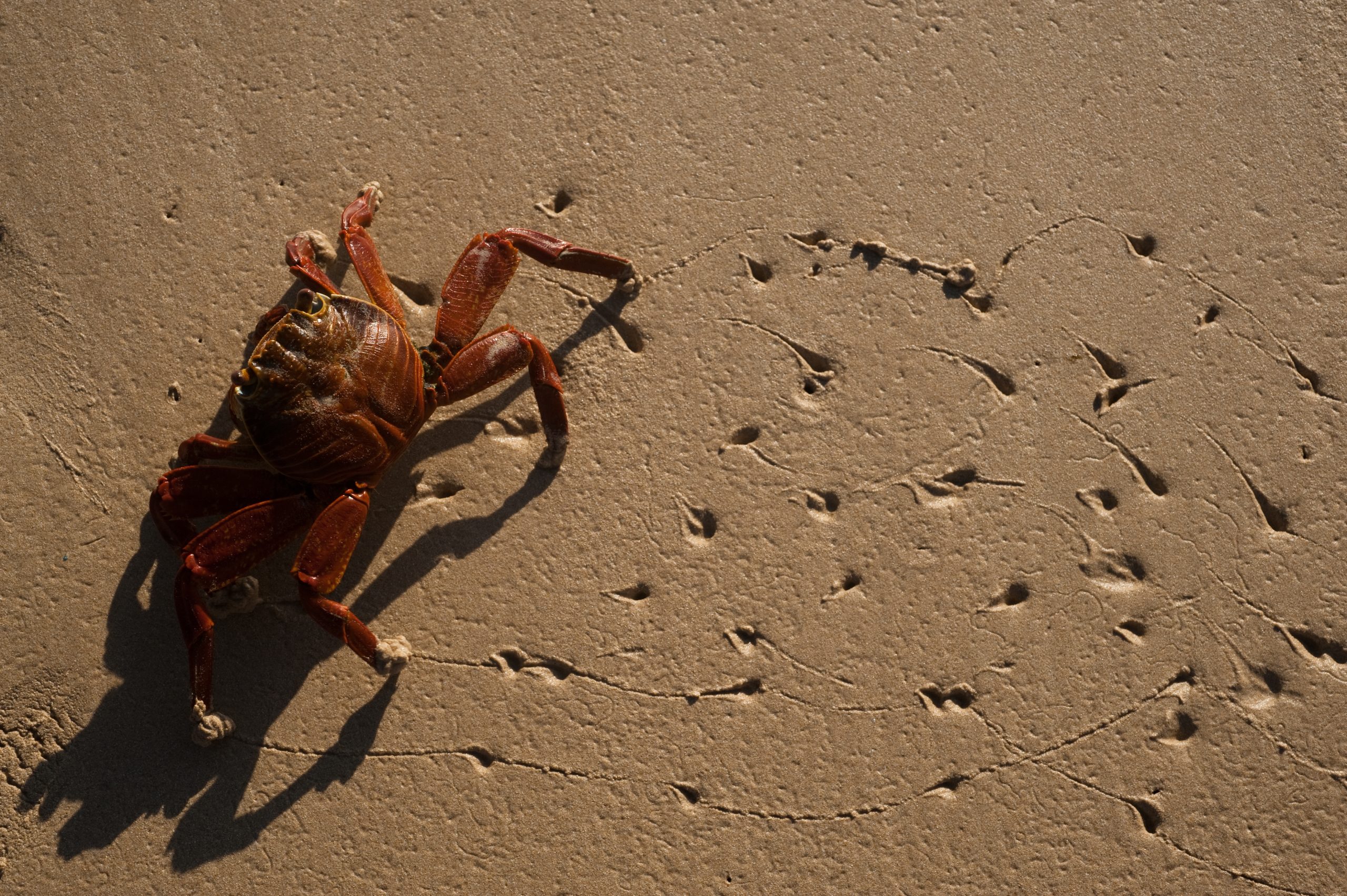
What was on the Paleolithic dinner menu for Neanderthals? A delicious crab roast, at least for those in Portugal, according to a recent archaeological discovery in a cave roughly 20 miles south of Lisbon.
Excavations at the Figueira Brava cave uncovered 90,000-year-old remains of brown crab, or Cancer pagurus, including charred shell fragments, according to a study published in the journal Frontiers in Environmental Archaeology.
“Neanderthals regularly harvested large brown crabs,” the study’s lead author, Mariana Nabais, a postdoctoral researcher at the Catalan Institute of Human Paleoecology and Social Evolution, told Frontiers. “The animals were brought whole to the cave, where they were roasted on coals and then eaten.”
The study ruled out the possibility that the crabs had been consumed by other animals, as the shells didn’t have any tooth marks, and did not appear to have been shattered by birds dropping them on rocks.
Crustacean remains found at the Figueira Brava cave. Photo courtesy of Mariana Nabais.
Instead, the blackened burn marks on some of the crab shells suggest they were cooked at temperatures of 572 to 932 degrees Fahrenheit. Plus, the damage patterns were consistent with human consumption, and remarkably similar to how modern-day diners crack open the crustaceans.
Brown crabs remain popular across Portugal, Spain, France, and Italy, and are now typically served in Lisbon with roe and mustard. (We’ve upgraded, of course, in the ensuing millennia, from using stone tools to metal crackers and cutlery.)
Cracked-open and burnt fragments of pincers of brown crabs found at the Figueira Brava cave. Photo by João Zilhão, courtesy of the University of Barcelona.
Earlier theories about human evolution proposed that the consumption of seafood, with its high concentration of omega-3 fatty acids that promote brain growth, allowed early Homo sapiens to develop superior cognitive abilities that gave them a competitive advantage over the Neanderthals, thought to subsist on meat.
“Our results add an extra nail to the coffin of the obsolete notion that Neanderthals were primitive cave dwellers who could barely scrape a living off scavenged big-game carcasses,” Nabais, who specializes in zooarchaeology, the study of archaeological animal remains, told CNN.
Archaeologists also found the remains of limpets, mussels, clams, and different kinds of fish in the cave, suggesting that various types of marine life were prominent in the inhabitants’ diet. Sounds like the Neanderthals were pretty gourmet!
Figueira Brava cave in Portugal. Photo by Pedro Souto, courtesy of João Zilhão.
Study co-author João Zilhão, of the Catalan Institution for Research and Advanced Studies (ICREA) an the University of Barcelona, had published earlier findings of seafood in Figueira Brava in the journal Science in 2020.
Based on the pincer size, archaeologists conducting the new study determined that the 635 crab shell fragments found at the site were mostly from large adults. That suggests the Stone Age chefs selected crabs in part for their size—each would have yielded about seven ounces of meat.
Crab shell fragments from Figueira Brava cave. Photo courtesy of Mariana Nabais.
Neanderthals may have hunted the agile crabs in shallow tide pools on the rocky shoreline, perhaps using spears to secure their prey. Though seafood tends to have fewer calories than meat, it is rich in other important nutrients—and fishing was also a lot less dangerous than hunting large game.
Discovering the prehistoric meal involved clambering down a steep cliff on the edge of the Atlantic Ocean to enter the cave. During Neanderthal times, the coast was about a mile away, but rising sea levels have brought the water closer.
“It was a bit adventurous,” Nabais told the New York Times. “In a way, it’s good that it’s hard to get there, because that’s what allowed it to preserve such incredible, incredible finds.”